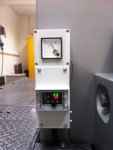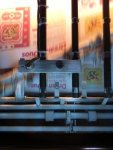Disappointed
Well-known member
Hi all,
this may already be in existance on some presses, but i dont know of any that have it. Is there any print related reason that Infrared temperature control should NOT be a closed-loop system. I.e. monitored and controlled automatically to give a preset stack/sheet temperature??
Do not concern yourself with the technical aspect, that is already covered. Likewise do not base your answer on cost-effectiveness as that is irrelelvant in this instance.
Purely, are there any reasons why it should not be closed-loop??
Thank
Dave
this may already be in existance on some presses, but i dont know of any that have it. Is there any print related reason that Infrared temperature control should NOT be a closed-loop system. I.e. monitored and controlled automatically to give a preset stack/sheet temperature??
Do not concern yourself with the technical aspect, that is already covered. Likewise do not base your answer on cost-effectiveness as that is irrelelvant in this instance.
Purely, are there any reasons why it should not be closed-loop??
Thank
Dave













